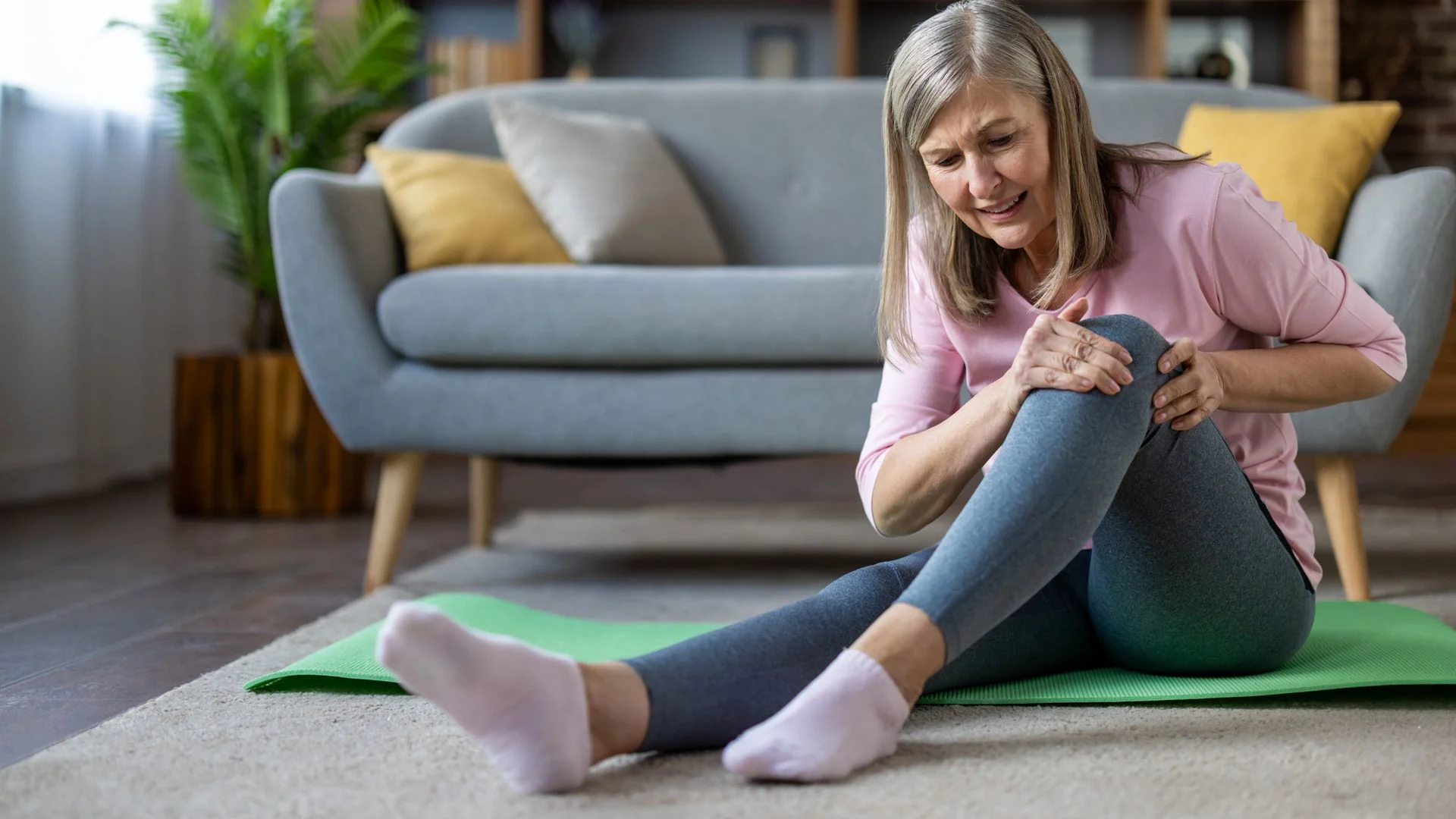Copyright hellomagazine

We've often highlighted the numerous benefits of yoga, a discipline that is perfectly designed for today's fast-paced world, helping you slow down and connect your body and mind. Yoga helps with strengthening your muscles, increasing flexibility, supporting injury recovery (when practised with a qualified instructor) and restoring mental calm. It's also known for its pain-relieving properties. And the best part? You can get started at any age. Asthanga Yoga & Hatha Vinyasa Yoga instructor Dorothy Collado explains yoga's healing role with knee pain, noting that specific postures can help strengthen and stretch the muscles surrounding the knee, which helps relieve discomfort over time. She also gives solid advice about what you need to know to prevent injuring yourself when starting yoga, and reveals the specific postures that are especially effective for strengthening your knees. What should you know before starting yoga, especially with knee problems? If you're in an in-person yoga class, you should let your teacher know about any physical challenges you have so they can take it into account and help you adapt any poses if necessary. Something to keep in mind for everyone, whether in a class or if you practise at home, is to be sure to respect your body's limits and don't force yourself. The important thing about yoga isn't being the most flexible or being able to execute the most Instagrammable poses. The goal is to explore your own personal limits, respecting and accepting yourself for where you are in your fitness journey. Try to disconnect from outside noise and connect with your breathing; feel your muscles and release tension. It's not what you can do with your body, but what you can discover within yourself. Every person's body is unique, so avoid comparing yourself to others and focus on how your body feels. By respecting yourself and your limits, you'll get more out of these yoga exercises. Are there yoga poses that can hurt your knees? Yes, there are yoga postures that can be detrimental to the knees. "For instance, the Half Lotus or Full Lotus poses involve an intense flexion of the knee, which can potentially pinch the inner part of the menisci," explains Dorothy. (If this happens, you should consult a doctor.) Pause and assess your hip mobility, because insufficient hip mobility in these poses puts excessive strain to the knees. The way to modify the pose is to place a support (like a cushion or block) under your ischia (located in the pelvis) so your knees are lower than your hips. This also helps prevent rounding in the lower back. If you still feel any discomfort or pain, stop doing the pose immediately. Other poses that can aggravate knee issues are Virasana (Hero Pose) and Malasana (Garland Pose). "These asanas can intensify existing knee pain if they are not performed with the necessary support and proper body awareness," explains the expert. Yoga stretches and poses that are beneficial for your knees Even if you experience knee pain, there are several gentle yoga movements that are safe and effective. Warrior Poses (Virabhadrasana I, II, and III) All three variations of the Warrior Pose are excellent for strengthening the legs and improving stability without stressing the knees. Warrior I (Virabhadrasana I) From a standing position, take a long step back with one leg. Turn your back foot out about 45 degrees, keeping your front foot pointed straight ahead. Bend your front knee of to 90-degree angle, keeping your back leg straight. Raise your arms overhead with palms facing each other. Warrior II (Virabhadrasana II) Start the pose similarly to Warrior I, but with the back foot more parallel to the back edge of the mat. Turn your hip and torso to the side of your front leg. Bend your front knee and keep the back leg straight Extend your arms parallel to the floor, looking over your front hand. Warrior III (Virabhadrasana III) From Warrior I, shift your weight onto your front foot, leaning your torso forward. Lift your back leg, stretching your body until it forms a horizontal line from head to heel. Extend your arms forward, aligned with your body. Triangle Pose (Utthita Trikonasana) The Triangle Pose helps strengthen the legs and improve alignment. Start with your feet wide apart. Turn your right foot outwards. Stretch your body to the right, reaching toward your ankle or the floor with your right hand. Keep your right leg straight, extend your left arm straight toward the ceiling. Chair Pose (Utkatasana) This pose builds strength in your legs and glutes while improving balance, which is key to preventing knee pain. Stand with your feet together. Lower your hips as if you are sitting down into a chair. Raise your arms overhead, keeping your spine long and straight. Bridge Pose (Setu Bandhasana) The yoga instructor highly recommends the Bridge Pose because it strengthens the legs and glutes, muscles vital for knee injury prevention. Lie on your back with your knees bent and feet on the floor. Lift your hips upward, keeping your shoulders on the floor. When lowering your hips, try to roll your back down slowly, one vertebra at a time. Staff Pose (Dandasan) For added comfort, the expert recommends placing a rolled blanket or cushion under your knees. Sit on the floor with your legs stretched out in front of you. Keep your spine straight and your leg muscles active. Seated Forward Bend (Paschimottanasana) In this pose, prioritise alignment and don't force the stretch. Sit with your legs extended. You can place a support under your knees if you'd like, for greater comfort. Hinge forward from your hips, maintaining a straight back. Knees to Chest Pose (Apanasana) Lie on your back. Gently draw your knees toward your chest, allowing this action to release the tension in your lower back. Reclined Big Toe Pose (Supta Padangusthasana) With this exercise, if you are unable to reach your foot with your hand, loop a yoga strap or belt around the sole of your foot. Lie on your back, then extend one leg up toward the ceiling, lifting your arms to touch your foot with your hands. To relieve tension in your hips, place a cushion or blanket underneath if necessary. Goddess Pose (Utkata Konasana) Stand with your feet wider than your shoulders. Bend your knees, ensuring your knees are aligned directly over your ankles and are prevented from rolling inward.



